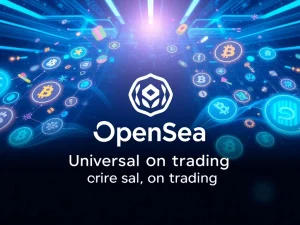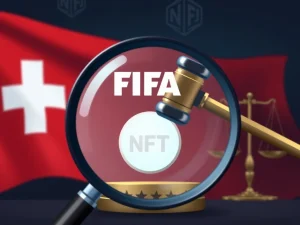OpenSea OS2: Revolutionary Expansion into Cross-Chain Digital Asset Trading

Big news from the world of digital assets! OpenSea OS2 has officially rolled out to the public, marking a significant evolution for the platform. What started as the go-to destination for NFTs is now aiming to be a comprehensive hub for all things onchain. This move with OpenSea OS2 signals a strategic shift, broadening its scope beyond just non-fungible tokens.
OpenSea OS2: What’s New?
OpenSea’s new platform, OS2, has completed its beta phase and is now available for everyone. The core update is its expanded support. OS2 enables full token trading across 14 different blockchains. This includes a major step: support for fungible tokens on networks like Solana. The platform also introduces new tools designed to improve cross-chain functionality. These changes position OpenSea as a more comprehensive platform for various digital assets.
Why Focus on Cross-Chain Trading?
The push towards cross-chain trading is about simplifying the user experience. According to OpenSea CMO Adam Hollander, the vision has always been that everything onchain should be accessible and liquid in one place. Users often navigate multiple decentralized applications (DApps) and bridges to manage different types of tokens across various networks. OS2 aims to streamline this. Imagine minting an NFT on Solana, swapping a gaming token on Ronin, and buying a memecoin, all from a single wallet flow. This is the kind of integrated cross-chain trading experience OpenSea is building.
Is the NFT Marketplace Still Relevant?
Despite the broader expansion, the NFT marketplace remains a core part of OpenSea. While market volumes are down from their peak years, OpenSea reports promising user engagement. Adam Hollander noted that weekly unique collectors on the platform have increased by 40% since January. This suggests that while market speculation (‘tourists’) may have decreased, dedicated users (‘true users’) remain active and are exploring more chains. This trend aligns with broader market data showing an increase in unique NFT buyers in recent months. The data indicates a resilient base of users still valuing digital ownership.
The Power of Digital Asset Trading
OpenSea believes there is still significant value in provable digital ownership. Once ownership of an asset is verifiable onchain, new possibilities emerge. This includes the growing area of real-world assets (RWAs), where physical items are tokenized as digital assets. For example, a platform using NFTs to tokenize physical trading cards recently saw substantial sales volume, demonstrating the potential for digital asset trading linked to tangible items. Hollander suggests that new technology often starts with narrow applications before evolving into more powerful uses, hinting at the future potential of diverse digital assets.
Ensuring Profitability in Blockchain Trading
For businesses in the blockchain space, profitability, even when market volumes fluctuate, depends on strategy. Hollander states that profitability flows to businesses that consistently add real utility and options for users. This principle is driving OpenSea’s expansion. By investing in avenues like cross-chain token trading, OpenSea aims to provide more value and functionality to its users, reinforcing its position as a central hub for blockchain trading and digital assets.
Summary: A New Era for OpenSea
The public rollout of OpenSea OS2 marks a pivotal moment. By expanding beyond its origins as purely an NFT marketplace to support full token trading across multiple blockchains, OpenSea is addressing the complexity of managing diverse digital assets in the current ecosystem. The focus on cross-chain trading aims to create a more unified and efficient experience for users. While the NFT market has seen changes, OpenSea’s data indicates a dedicated user base is growing and exploring more chains. The platform’s investment in broader digital asset trading, including potential links to RWAs, reflects a belief in the long-term power of onchain ownership and utility as key drivers for profitability and growth in the evolving blockchain landscape.









